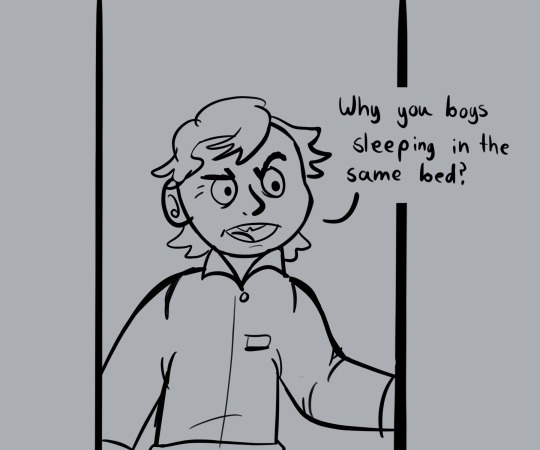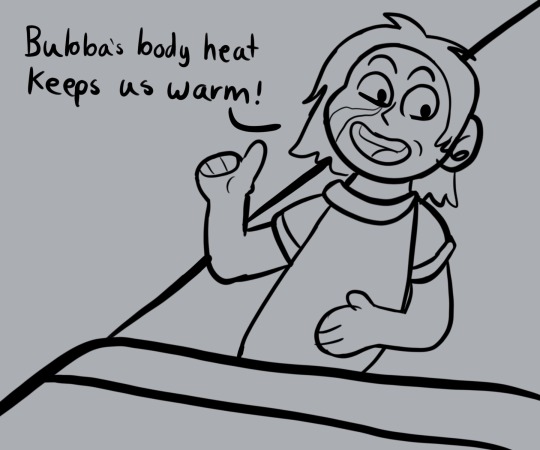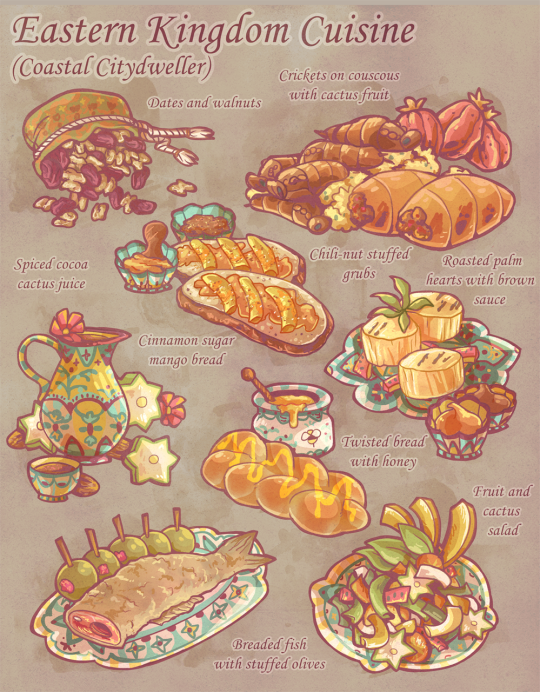#on top of chowder
Explore tagged Tumblr posts
Text



the Sawyers during one cold winter night
#my art#the texas chainsaw massacre#fanart#tcm#chop top sawyer#drayton sawyer#bubba sawyer#nubbins saywer#texas chainsaw massacre fanart#was inspired by the Knishmas episode from Chowder
226 notes
·
View notes
Text

Endive
19 notes
·
View notes
Text
Continued from previous art dump post. "Catober"-themed month drawings from 2023 (Days 15-31):


















Going to do another more of these drawings this year starting tomorrow with a brand new set of characters.
#october drawing challenge#catober2023#art dump#old art#catscratch#cyborg kuro chan#sailor moon#animaniacs#101 dalmatians#101 dalmatian street#inuyasha#puss in boots the last wish#puss in boots#doraemon#chowder#my neighbor totoro#trigun#looney tunes#top cat#kiki's delivery service#mr. blik#gordon quid#waffle#jiji#sergeant tibbs#constantin#deepak dalmatian#kirara#rita and runt#catbus
13 notes
·
View notes
Text

I’d watch the hell out of this show
#yeah I used chowders technique to just lazily throw a pattern on top of the clothes#so what#anyway#god I wish we could’ve had the scene where lanfear gets him to go and teach Rand#I might’ve made asmodean a bit of a himbo given the fact that he is a bard so#forsaken#wheel of time#wot book spoilers#lanfear#asmodean#my art#mine
93 notes
·
View notes
Text

Color Wheel Challenge
#digital art#myart#fnf girlfriend#fnf#friday night funkin#bluey#bluey bingo#bingo heeler#adventure time#jack the dog#jellystone#top cat#spooky#the amazing world of gumball#gumball#welcome home#wally darling#chowder#spongebob#spongebob patrick#color wheel#color wheel trend#color wheel meme#color wheel challenge
111 notes
·
View notes
Note
💌 :)
I remember as soon as we became mutuals you were super friendly and outgoing (we talked about chowder iirc <3) and you’ve given me some great recommendations for things to enjoy, like wb.g and your super cool music taste
#asks#top tier mutual#also I have the worst memory ever so if i’m misremembering and the chowder wasn’t you i’m sorry😭
6 notes
·
View notes
Text



screaming crying sobbing etc etc
#HE GAVE ME THE FAMILY RECIPE FOR CLAM CHOWDER NOAH WHAT ARE WE#coral island pt#immy lacanilao#im still trying to see other romance options but noah is absolutely at the top like fisjfdi#i squealed when i saw my rs w him went up jfidfi
19 notes
·
View notes
Text

Sure I feel sorry for the boys here but I cane with this idea to parodize part of the episode of Ed edd n eddy
"honor thy ed" with each girl of the other classic Cn show we all remember and their "beloved" boys wearing like the eds and Kankers during the pretend wedding.
#drawing#drawings#drawingart#digital art#digitalart#comic#chowder#cartoonnetwork#oldtimes#classic#chownini#chowder and panini#mermalade#ceviche#schnitzel#endive#marriage#triple#door lock#top hat#sailor#sailor costume#bride veil#ed edd n eddy#honor thy ed#goat#pig#bunny#cat#parody
2 notes
·
View notes
Text
Haha
I made some progress today despite what happened earlier
And no I hadn't touched this project until today
Nor am I determined to make it perfectly clean, but I'm trying to make it decently smoove
#anonymous_h#dbz#dragon ball#art#wip animation#animation#dbz ocs#you can definitely tell it's the girls now#I'm working on phaze two which is clean up and smoothng out some stuff#then I'll be adding the faces proper and more body details#boy the lines I'm going to have to animate#i can fully understand why Cell was not revived for the TOP since it was still hand drawn#I'll happily fudge his spots with a Chowder effect#if you know you know
2 notes
·
View notes
Text
Yeah so update: My face is swollen
#mabosstiff keeps barking at me if i get out of bed (even though my legs are fine) and insists on sleeping right on top of me#arceus is my ice pack bringer which is cool. i genuinely didn't expect her to care about me#the others are helping out too. well... chowder's upset he can't really help because of his lack of limbs but he's emotional support#also mad about the other yellow shiny in the room. and terrified. timid natures...#it's hard having all these guys crammed in my small ass dorm but they seem to be more concerned about me than their own comfort. it's cute.#arven posts#pokemon#pokemon irl#irl pkmn#pokeblr#rotomblr
9 notes
·
View notes
Text


We are 13 fucking minutes into this season of Top Chef, and these motherfuckers are already putting chowder in fucking apples
#top chef#and they were one of the top teams!!! if you served me chowder in a fucking hollowed out apple i'm jumping you!!!!
1 note
·
View note
Text

[The salad on the top is what makes it. Wow!]
1 note
·
View note
Text

this one was a pretty good one, I think.
Spotify wrapped this, and spotify wrapped that.
Show me your Libby Audiobooks wrapped.
Show me the top three conversations where you said something witty at the right time and everyone appreciated it.
Show me the most repeated depression meal you made this year and the one day where you ate it 5 times.
Show me all the cool mosses you've seen this year.
But yeah also show me your spotify wrapped.
#anyway top tier depression meal is canned soup. chicken corn chowder ideally.#Bowl Of Rice With Various Seasoning Salts is up there though
160 notes
·
View notes
Text
-
There was a clatter in the bakery and I heard the woman screaming again and the sound of a blow, and I vaguely wondered what was going on. Feet sloshed toward me through the mud and I thought, It’s her. She’s coming to drive me away with a stick. But it wasn’t her. It was the boy. In his arms, he carried two large loaves of bread that must have fallen into the fire because the crusts were scorched black.
His mother was yelling, “Feed it to the pig, you stupid creature! Why not? No one decent will buy burned bread!”
[…]
The boy took one look back to the bakery as if checking that the coast was clear, then, his attention back on the pig, he threw a loaf of bread in my direction. The second quickly followed, and he sloshed back to the bakery, closing the kitchen door tightly behind him.
-
Getting the broth into Peeta takes an hour of coaxing, begging, threatening, and yes, kissing, but finally, sip by sip, he empties the pot.
-
“No more kisses for you until you’ve eaten,” I say.
We get him propped up against the wall and he obediently swallows the spoonfuls of the berry mush I feed him. He refuses the groosling again, though.
-
Peeta feeds me bites of groosling and raisins and makes me drink plenty of water. He rubs some warmth back into my feet and wraps them in his jacket before tucking the sleeping bag back up around my chin.
-
I watch as Peeta crosses to the table, the sunlight from the window picking up the glint of fresh snow in his blond hair. He looks strong and healthy, so different from the sick, starving boy I knew in the arena, and you can barely even notice his limp now. He sets a loaf of fresh-baked bread on the table and holds out his hand to Haymitch.
-
From the bag I pull two fresh buns with a layer of cheese baked into the top. We always seem to have a supply of these since Peeta found out they were my favorite.
-
“I checked in on him. Dead drunk. But I built up his fire and left him some bread,” he says.
-
My mother lets me sleep until noon, then rouses me to examine my heel. I’m ordered to a week of bed rest and I don’t object because I feel so lousy. Not just my heel and my tailbone. My whole body aches with exhaustion. So I let my mother doctor me and feed me breakfast in bed and tuck another quilt around me.
-
My mother sits on the side of the bed and Prim crawls right up next to me and they hold me, making quiet soothing sounds, until I am mostly cried out. Then Prim gets a towel and dries my hair, combing out the knots, while my mother coaxes tea and toast into me. They dress me in warm pajamas and layer more blankets on me and I drift off again.
-
Gale sets his tray beside me and I try not to stare at his turnips too pathetically, because I really want more, and he’s already too quick to slip me his food. Even though I turn my attention to neatly folding my napkin, a spoonful of turnips slops into my bowl.
-
My mother and Prim take turns nursing me, coaxing me to swallow bites of soft food.
-
I’m really not in the mood to divvy up everything into eleven equal parts, factoring in age, body weight, and physical output. I poke around in the pile, about to settle on some cod chowder, when Peeta holds out a can to me. “Here.”
I take it, not knowing what to expect. The label reads LAMB STEW.
-
Peeta, bearing a warm loaf of bread, shows up with Greasy Sae. She makes us breakfast and I feed all my bacon to Buttercup.
-
something something about how in a series called the hunger games, one of the most kind and intimate acts of love in the mind of the protagonist is feeding those you care for.

#thg#hunger games#katniss everdeen#peeta mellark#everlark#haymitch abernathy#gale hawthorne#asterid match#primrose everdeen#I CAN FINALLY TAG MRS EVERDEEN#100
144 notes
·
View notes
Note
What's your favourite kind of tea, and your preferred tea snack to go along with it?
Black peach boba tea with passionfruit popping boba, ideally with extra-mushroom pizza or deep-fried crab and avocado! Oooooh or spicy crab sushi with the orange eggs on top. OR PIEROGI. Or grilled cheese. Ooh or seafood chowder. Or my mom's coconut-chicken soup. OR MUSHROOM LO MEIN AND SPRING ROLLS. Or calamari. Or or or or
#God I fucking love food#Seafood or mushrooms are usually safe bets for me#But I've never met a potato I didn't like#Actually never mind my papa made these potato dumpling things when I was a kid that were the absolute worst#I don't know what else was in them#Imagine a fist-sized ball of glue#Slightly translucent#Tasted like.... a boiled-down horse hoof#Irredeemable
178 notes
·
View notes
Text



Thought it would be fun to illustrate some Amaranthine cuisine from various regions (and time periods). Long writeups under the cut!
Western Kingdom Cuisine: Northern Upper Class
The cultural cuisine of the northern part of the Western Kingdom is shaped by the region's harsh, snowy climate. The cold meant that it was easier to keep food from spoiling, but hard to find it in the first place. During the warmer spring and summer months, food would be collected and then salted, dried, pickled, or otherwise preserved in order to last through the winter. Red meat is their primary dietary staple, and is served in a wide variety of ways, including raw and engastrated. Dairy is also common in all forms -- cheese, butter, milk, and as a component of common sauces and chowders (another cultural favorite, and great way to use up leftovers). Alcohol is also common, with a favorite cultural drink being a spiced, warmed fermented milk with a flavor similar to eggnog.
Northern dishes prioritize making use of all parts of the animal, especially nutrient-rich organ meats and fat. As a landlocked region with few rivers, fish is somewhat uncommon, but not unheard of, especially salted or pickled fish shipped in from the south. Also, as mentioned before, eating animals, including "one's own kind", is not taboo at all in this region. In such harsh climates, turning one's nose up at a filling meal is seen as ridiculous.
When good meat is available, though, presentation can get a little… creative. Or, as some might describe it, obscene. Feasts for nobles often involve whole roast hogs stuffed with turkeys stuffed with game birds stuffed with exotic, imported pickled fish, ground meat sculpted into strange and creative shapes, and other ostentatious displays. If a nobleman's chefs can do something artistic with the meat that his guests have never seen before, it's considered very impressive. Of course, to foreigners, a western kingdom noble's banquet can look rather nightmarish and grotesque. Such displays of excess are generally the realm of the wealthy, but most families will still celebrate with a "turducken" or similar engastrated roast once a year during winter feast.
Fresh fruits and vegetables make up only a small component of northern dishes. Berry preserves and pickled vegetables are prepared during the summer months, but the only "fresh" vegetables accessible during colder months are hardy root vegetables and tubers harvested from geothermal caves. Mushrooms, also harvested from the caves, are eaten in many forms.
Bread made in this region is typically very hard and dense. This "thickbread" is intended to be soaked in gravy, milk, or soup to soften it and make it more palatable. Attempting to eat the bread without softening it is a clear indicator that someone is a foreigner, or perhaps so poor that they can't afford a proper meal. Some "thinbread" is baked slightly softer and intended to be eaten in slices, but culturally, it's still expected that you put some sort of gravy or spread on it so that you don't look like a confused foreigner or destitute peasant.
For dessert, northerners often eat dessert breads soaked in sweetened, spiced cream and topped with berry preserves and candied mushrooms. Berry tarts are also made with preserves during colder months and fresh fruit during summer months, and are associated with spring, celebration, and hardship ending. These berry tarts are often eaten at celebratory dinners at the end of winter and given to students after finishing exams.
Many residents of other territories find traditional northerner food a little overwhelming due to how rich and dense it is. It can certainly take some getting used to. Eastern Kingdom residents tend to find northern cuisine especially nightmarishly grotesque and barbaric due to their cultural views around meat. However, with increased trade and travel over the last few decades, northerner food is beginning to look more like the food from the rest of the Western Kingdom, and some of the more offputting cultural practices like the ostentatious engastrated meatcraft and inedible-unless-softened bread are becoming somewhat less popular.
Eastern Kingdom Cuisine: Coastal Citydweller
The Eastern Kingdom's cuisine is similarly influenced by their climate. The desert that spans much of the region meant that, aside from its sparkling oasis cities and rim of fishing towns along the coast and major river, many residents traditionally lived a nomadic lifestyle. Additionally, unlike the Western Kingdom, they absolutely do view "eating your own kind" as tantamount to cannibalism, which meant that most red meat was only consumed during times of desperation or occasionally during holidays/rituals, though the latter is mostly seen as a weird unsavory rural thing.
The Eastern Kingdom's meat taboo generally does not extend to fish, shellfish, and insects. Fresh fish and shellfish are routinely consumed near the coast, often seared in olive oil and spices and served over a couscous-like grain base, and a salty paste made of fermented fish is smeared on bread in interior regions. Beetles coated in chopped nuts and chili powder and dried, and honeyed crickets are also popular snacks.
Eastern Kingdom cuisine also involves a lot of nuts, beans, and seeds as major dietary staples. These foods are long-lasting, spoilage-resistant, nutrient-rich, and grew easily along the banks of the kingdom's major waterway and oases even before cities settled there. These three food groups are found in nearly all of their cooking. Nuts and seeds are baked into bread and desserts but also mixed into stir fry-type dishes to add protein. A common dessert and trail snack consists of dried dates mixed with walnuts. Dates and figs are also made into jams and eaten spread over bread or as a component in sauces.
Vegetables and fruits, as well as olives, were grown in grand, sprawling, aqueduct-fed gardens in oasis cities and on riverbanks. Cacti, once cultivated extensively by ancient nomads, are served chopped and glazed with honey, another dietary staple.
Dairy, derived from pack animals used by nomads, is also somewhat common, though difficult to transport without spoilage. It is paradoxically seen as a practical, basic food by nomads and farmers, who can milk it directly from its source, something of a luxury by city-dwellers.
Additionally, the Eastern Kingdom's sprawling coastlines mean an extensive seafaring presence. As a result, they have brought back many novel plants from far afield to be cultivated in the Eastern Sultan's personal palace garden. Among these: cocoa beans, which are refined into a spicy energizing herbal drink similar to coffee. "Chocolate houses" serving this drink can be found throughout larger cites, sometimes mixing the cocoa drink with more familiar sweetened cactus juice to stretch the expensive cocoa powder further.
Post-Fall Cuisine: Ironfrost Middle Class
The society that eventually emerged after the fall of the Old Kingdoms was quite different from what came before. Though discovery of ironworking led to the rise of industrialization--processed food and automated canning, among other innovations-- the harsh, permanent winter that eventually consumed most of the continent meant that cuisine never reached the levels of decadence it had in the Old Kingdoms. This is especially true of the working class in Ironfrost, whose rather dreary cuisine is shown here.
Limited accessibility of fresh fruits and vegetables--grown in engineered greenhouses or shipped in from the far south over increasingly long distances as the cold spread southward--meant that nearly all vegetables are eaten canned. Many, especially those in rural northern towns that lacked greenhouses, may have never even seen a fresh tomato or head of lettuce before. (The City of the Sun produces fresh fruit and vegetables for the far north--including exotic apples in nigh-extinct Old Kingdom varieties--but cutting a trade deal with the reclusive city-state can be difficult due to the whims of its elusive cultish leader.)
The one exception? Mushrooms. Like the Western Kingdom northerners that lived there before them, Post-Fall societies came to rely heavily on harvesting edible mushrooms from the geothermal caves below the tundra. Mushrooms are a crucial dietary staple and can be roasted, pickled, fried, pureed, or even candied. Many of the more specialized cooking styles such as candying were passed down by survivors of the fallen Western Kingdom, thought the passage of time and changing availability of spices and other ingredients have rendered many recipes quite different from their ancestors.
Fresh meat is easier to access and easier to preserve with minimal loss of taste or texture thanks to the frigid weather providing easy "refrigeration" by way of outdoor iceboxes. However, a whole, freshly-cooked roast is still considered a rare treat for most, especially for the mine and factory workers living within the dense industrial labyrinths of Ironfrost. Canned and dried meats are popular due to being less sensitive to spoilage when kept indoors or transported across different climates.
Overall, the heavy reliance on dried and canned food means that most available ingredients are ugly, mushy, and lacking in natural taste due to the extensive preservation process. As a result, stews, loafs, and casseroles are common, as well as jellied aspic dishes. Any manner of preparation that can hide the appearance of limp, shriveled vegetables or disguise the taste of eating the same salted meat every day is useful. Creative meat presentation, such as sculpting ground meat into fun shapes, decorated meatloaf, and ornate aspic molds is another cultural holdover passed on by Western Kingdom survivors, though in the current day it's associated more with the middle or lower middle class rather than nobility. It is now more of a way to make the most out of poor circumstances than to impress fellow nobles at parties.
(Side note, not pictured: Modern day Ironfrost elite tend to favor very plain dishes made out of fresh food, garnished with sliced fruit--the mere fact that they can access such exotic fare makes their wealth self-evident! An aspiring elite with limited funds can choose to rent a bowl of Sun City apples or even an elusive pineapple to impress party guests instead.)
One of the few pieces of Eastern Kingdom food culture that survived to the present day is chocolate, though like Western Kingdom dishes, it is now quite different from its original form. These days, cocoa is blended with fat and sugar and eaten as a dessert: chocolate. This has caused its popularity to explode. Chocolate bars are incredibly popular for their delicious taste and portability, and cakes and cookies made with chocolate are coveted by the poor and wealthy alike. Of course, the cold climate means that cocoa beans can only be grown in specialized greenhouses, and the owners of these greenhouses are keen to charge a premium for access. Ironfrost and The City of the Sun are the two major cocoa producers and it's not unheard of for Ironfrost soldiers to bully smaller cocoa growers out of business to maintain their near-monopoly. Still, hidden cocoa grows scattered around the tundra ensure that a large supply of "bootleg" chocolate remains on the menu--just don't get caught with it in Ironfrost territory.
546 notes
·
View notes